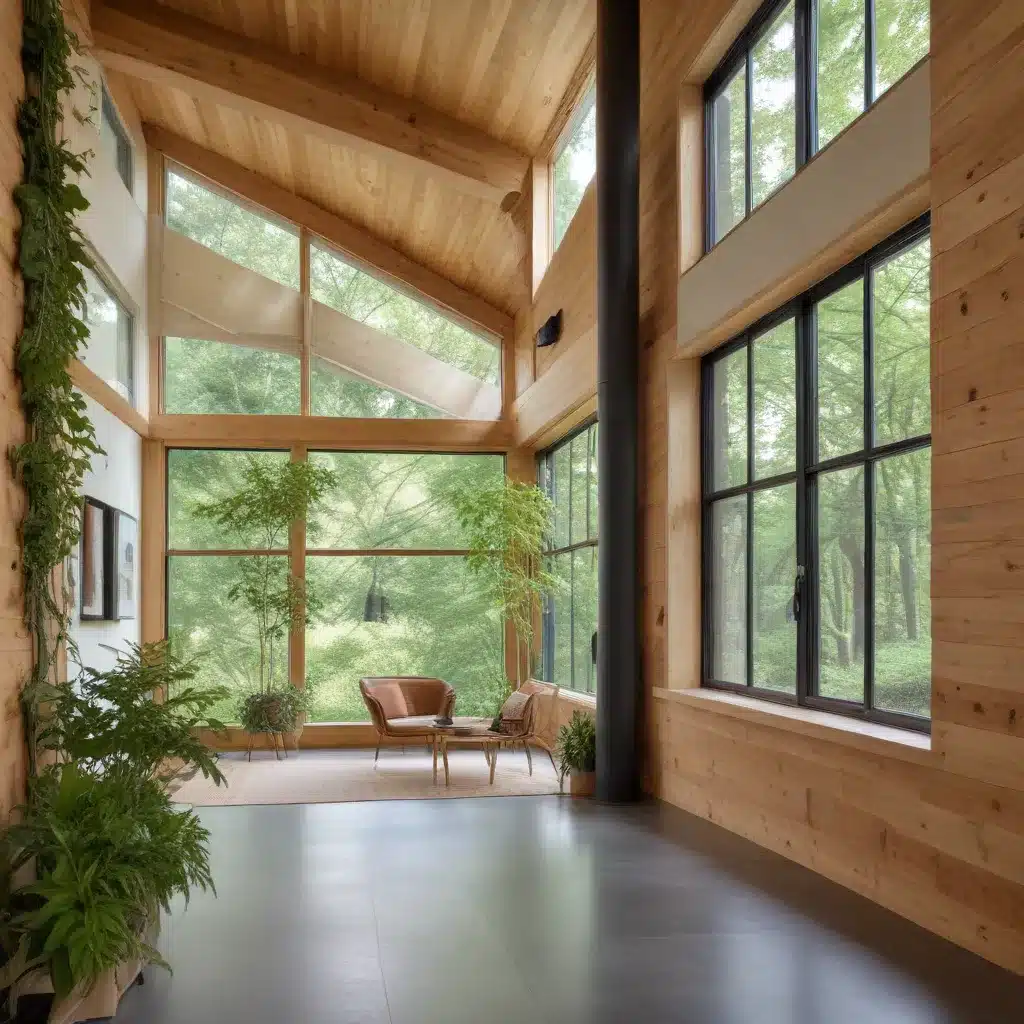
Eco-Friendly Renovations: Incorporating Biophilic Design Elements
As an experienced home improvement consultant, I’ve seen firsthand how biophilic design can transform the way we experience our living spaces. This innovative approach seamlessly integrates nature-inspired elements into the built environment, creating a harmonious connection between our homes and the natural world. Whether you’re planning a whole-home remodel or looking to incorporate small-space solutions, embracing biophilic principles can elevate your renovation project in remarkable ways.
Biophilic Design Principles
At the core of biophilic design is the fundamental idea that humans have an innate affinity for nature, a concept known as biophilia. By intentionally incorporating natural elements, designers and architects can create spaces that foster a deeper connection to the environment and enhance overall well-being. This approach is guided by three key principles:
Integrating Nature into the Built Environment
Biophilic design encourages the direct incorporation of living elements, such as plants, water features, and natural materials, into the built environment. This could involve anything from a living wall or indoor garden to the use of reclaimed wood or stone in your renovation project.
Promoting Connections with Natural Systems
Beyond just aesthetics, biophilic design aims to heighten our awareness of natural processes and cycles. This might include designing spaces that highlight seasonal changes, showcase water management systems, or provide views of the outdoors that encourage a sense of place.
Enhancing Occupant Wellbeing
Ultimately, biophilic design is about creating spaces that nurture physical and mental health. By strategically integrating natural elements, designers can reduce stress, boost cognitive function, and foster a greater sense of calm and rejuvenation for those who inhabit the space.
Sustainable Materials and Resources
As you embark on your eco-friendly renovation, the selection of sustainable materials and resources is crucial. Biophilic design often aligns with the principles of green building, emphasizing the use of renewable, recyclable, and responsibly sourced materials.
Renewable and Recyclable Materials
Look for natural, biodegradable materials like bamboo, cork, or hemp-based insulation that can be repurposed or decomposed at the end of their lifespan. These alternatives to traditional construction materials often have a lower environmental impact and can contribute to a more circular economy.
Responsible Sourcing Practices
When selecting materials, prioritize products that are FSC-certified (Forest Stewardship Council) or have other third-party sustainability certifications. This ensures the materials were harvested or produced in an environmentally and socially responsible manner.
Energy-Efficient Solutions
Incorporating energy-efficient windows, high-R-value insulation, and solar panels can significantly reduce your home’s carbon footprint and long-term operating costs. These upgrades not only align with biophilic principles but also contribute to the overall sustainability of your renovation project.
Spatial Configuration and Layout
The way you configure and arrange the spaces within your home can greatly influence the biophilic experience. By optimizing natural light, ventilation, and the integration of living elements, you can create a truly restorative environment.
Optimizing Natural Light and Ventilation
Strategically placed skylights, large windows, and well-designed window treatments can maximize the influx of natural light, reducing the need for artificial lighting and fostering a greater connection to the outdoors. Incorporating operable windows and passive cooling strategies can also enhance natural airflow and regulate indoor temperatures.
Incorporating Greenery and Living Elements
Incorporating indoor plants, green walls, or even small water features can bring a soothing, natural presence into your living spaces. These elements not only improve air quality but also create a visually stimulating and calming atmosphere.
Flexible and Adaptable Spaces
Biophilic design encourages creating multifunctional rooms and open floor plans that allow for fluid movement and the integration of natural elements. This adaptability can enable you to tailor your living environment to your evolving needs and preferences over time.
Sensory Experiences and Emotional Responses
Biophilic design goes beyond just the visual aspects of our living spaces; it also aims to engage our other senses and evoke profound emotional responses.
Engaging the Senses with Natural Textures
Incorporating a variety of natural materials, such as wood, stone, or woven textiles, can create a tactile experience that connects us more deeply to the environment. These textural elements can enhance our perception of the space and contribute to an overall sense of comfort and grounding.
Evoking Feelings of Comfort and Rejuvenation
The strategic placement of natural elements, like soothing water features or cozy nooks, can trigger restorative responses within the body and mind. These design choices can help reduce stress, improve mood, and foster a greater sense of calm and tranquility.
Fostering a Sense of Belonging and Connectedness
Biophilic design has the power to cultivate a deep, almost primal sense of belonging and connection to the natural world. By creating spaces that seamlessly blend the built and natural environments, you can foster a profound sense of harmony and emotional well-being.
As an experienced home improvement consultant, I’ve witnessed the profound impact that biophilic design can have on the overall quality of life for homeowners. Whether you’re embarking on a whole-home remodel or exploring small-space solutions, incorporating these nature-inspired elements can transform your living environment into a true sanctuary.
If you’re ready to embrace the benefits of biophilic design in your renovation project, I encourage you to explore the resources available on Reluctant Renovator. Their team of experts can provide invaluable guidance and practical insights to help you create a home that nourishes both your body and soul. By investing in eco-friendly upgrades and biophilic design elements, you’ll not only enhance the beauty of your living spaces but also reap the rewards of improved well-being and a deeper connection to the natural world.



